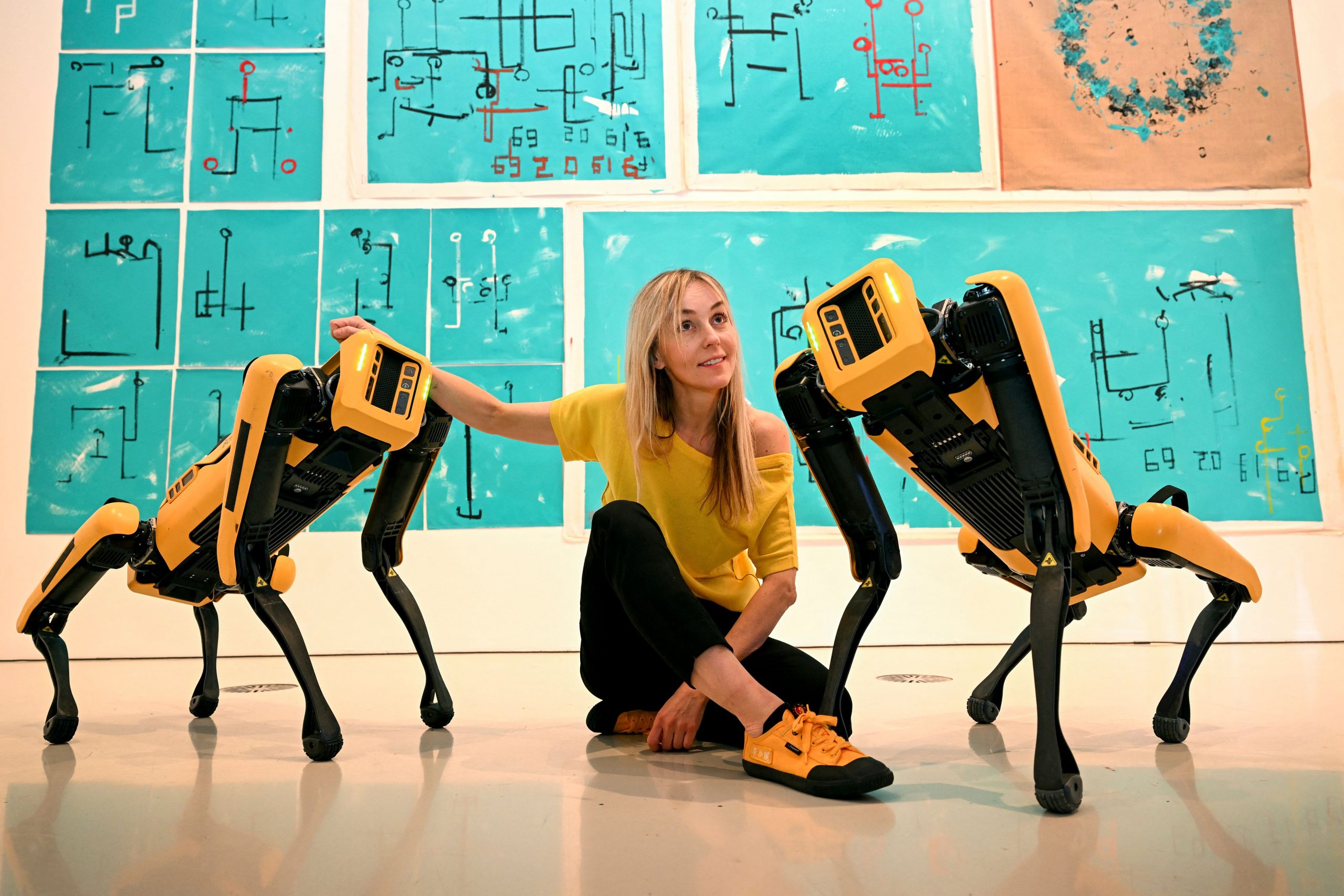
A dog may be a man’s best friend, but the robotic canines set to take up residence at National Gallery of Victoria’s Triennial are potentially an artist’s worst nightmare.
Among the more than 100 artists and designers that will be on display when the third NGV Triennial opens in December is Agnieszka Pilat, a Polish-American artist who is training a trio of robotic dogs to paint autonomously for the Australian art event.
Is Pilat worried about machines threatening human creativity? No. She’s a tech optimist, one who finds Bonnie, Archie, and Basia, the dogs’ names, cute.
“The project at the NGV is pushing the boundaries of my art practice,” Pilat told Artnet News. “[Previously] I operated the robots in real time and so there is a lot of engineering to develop them be fully autonomous, with only minimal human supervision.”
Boston Dynamic robot dogs trained by Pilat at the 2023 NGV Triennial announcement. Photo: Kim Landy/NGV/Getty Images.
Throughout the four-month show, visitors will be able to watch as artistically finessed versions of the Boston Dynamics robots paint inside a large white cube (with easy access to a charging station). The robot dogs will hold sticks of oil paint in their grippers that they will cast onto an acrylic canvas affixed to the wall. Their decision-making will be based on a series of commands programmed by Pilat, such as the movements of their painting arm, the pressure they exert on the canvas, and whether to paint dots or lines.
“The robots execute my aesthetic commands, I have no interest in allowing the robots to make generative art,” Pilat said. “In this sense, we are continuing the legacy of Sol Lewitt—instruction-driven art. I provide my instructions to the engineers and they code them into the robots behavior.”
Early versions of the robo-art appear like a marker-wielding child dashing off something in between an architectural plan and a family tree—fitting, Pilat believes, since the robots are young in human years and blessed with great knowledge but little understanding.
Pilat has been developing this project ever since she was commissioned to paint a portrait of Boston Dynamics’s Spot in 2020. She has since lived with a 60-pound yellow-and-black beast in her New York and San Francisco homes. Together, they have produced a series of brightly colored works, one of which sold for $31,500 at Sotheby’s in 2021.
Pilat with the paint used by her customized robot dogs. Photo: Eugene Hyland.
The arrival of Pilat at the NGV Triennial may represent something of an art world breakout for the trained illustrator who moved to San Francisco in 2004. While Pilat has received considerable attention for the novelty and provocation of her robot paintings, patronage has largely stemmed from the minted Silicon Valley set rather than the art world collectors.
The NGV Triennial will feature more than 75 projects, of which 25 are world premieres, under three main themes—magic, matter, and memory—meant to highlight the concerns of artists featured in the exhibition.
Tracey Emin, David Shrigley, Yoko Ono, Tao Hui, and Schiaparelli are among the artists set to present work, alongside 14 Australian artists, and digital practitioners such as Smac McCreanor and SMACK. It opens on December 3, 2023 and runs through April 7, 2024.
Pilat presents her robot dogs ahead of NGV Triennial in Melbourne, Australia. Photo: Kim Landy/Getty Images for NGV.